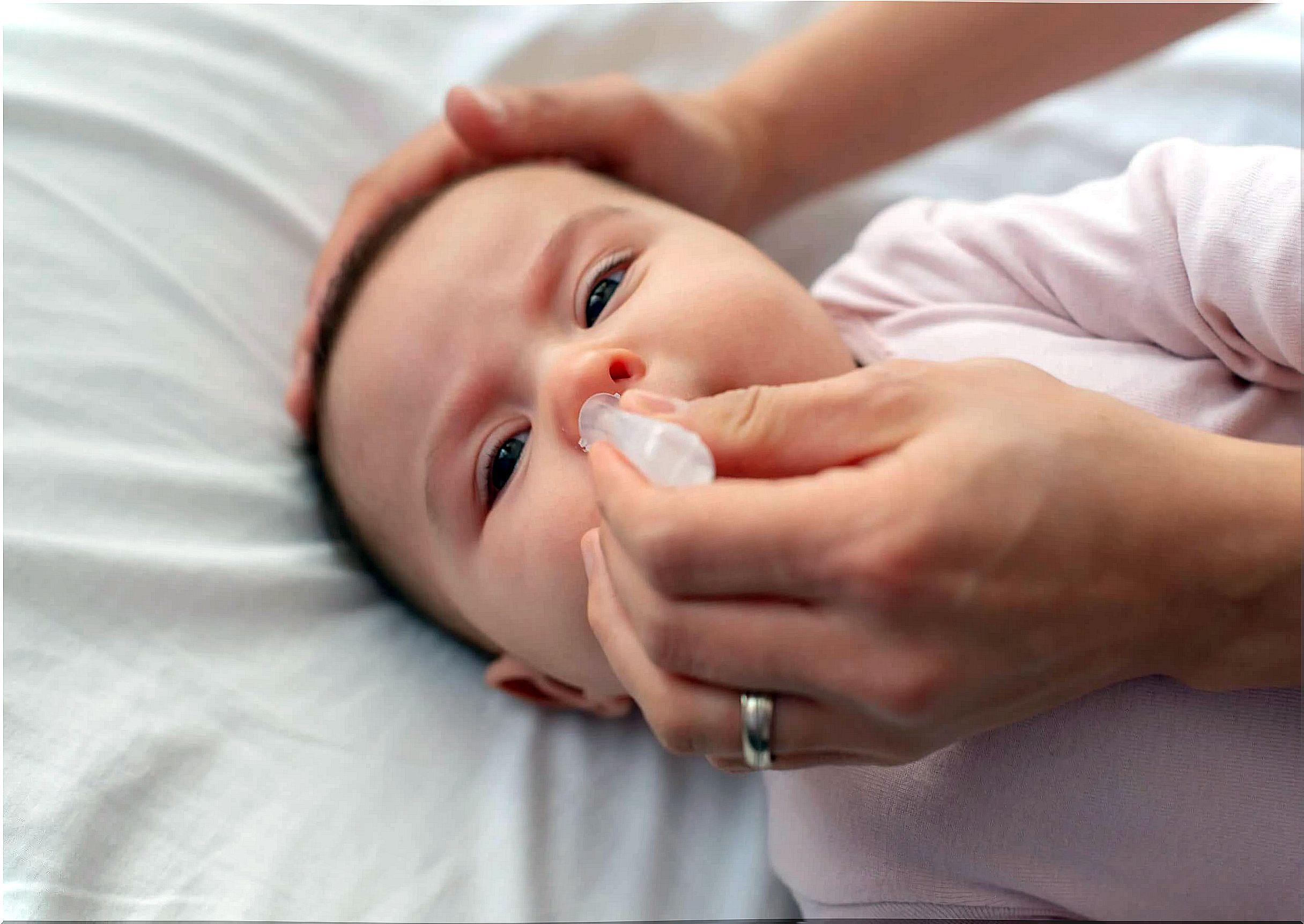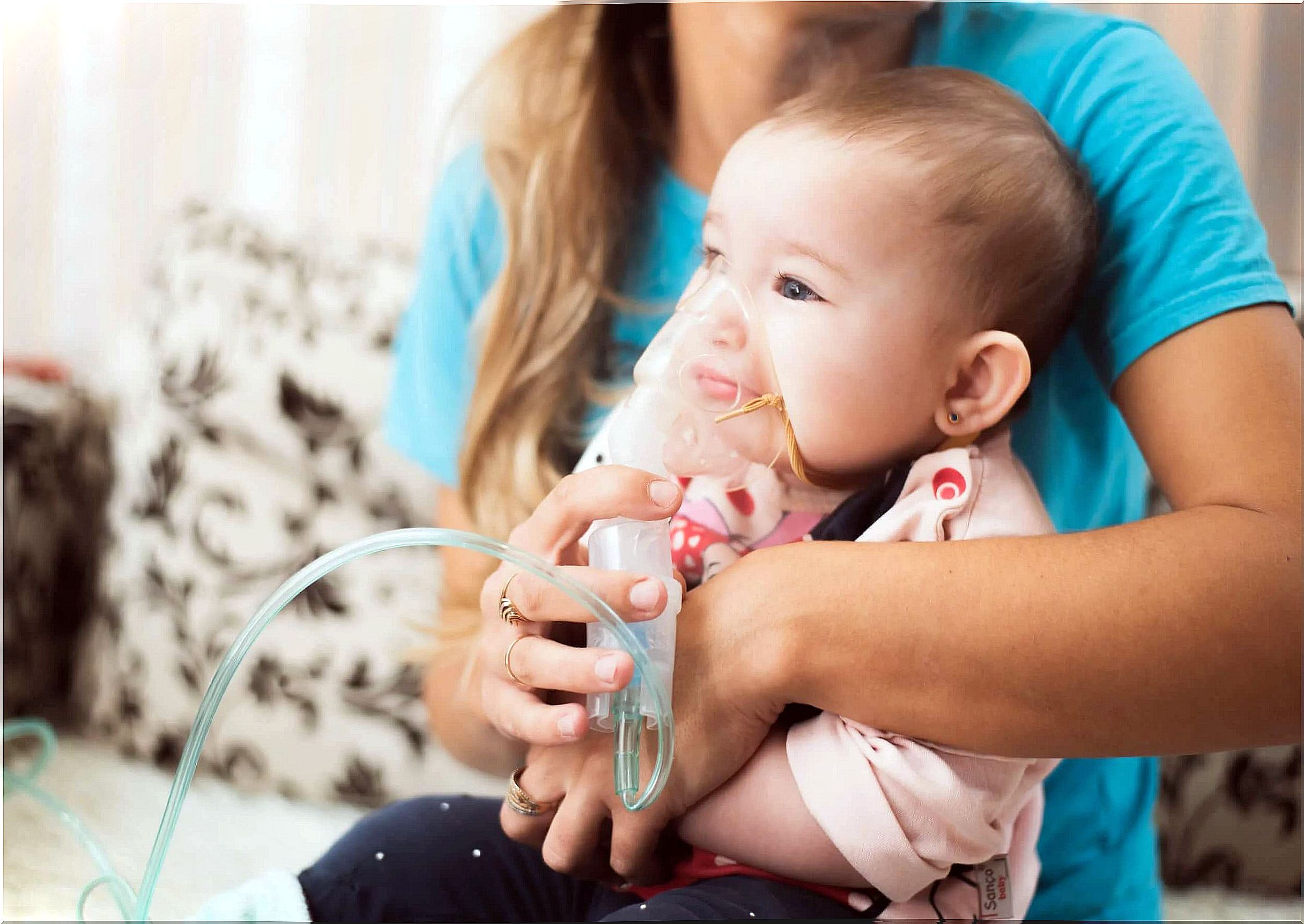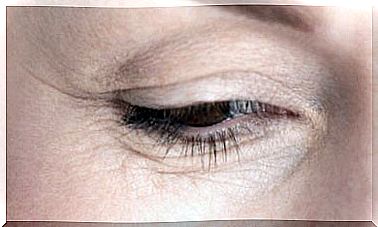Bronchiolitis: Causes, Symptoms, Treatment
Bronchiolitis affects up to 20% of children under 2 years of age. It is likely to be symptomatic in immunocompromised infants.

Acute bronchiolitis is a very common childhood disease. The approximate annual incidence worldwide is 10%, meaning that one in 10 children under the age of 2 will develop it every year. It is also the leading cause of hospital admissions for respiratory infections in this age group (1-5%).
There is no consensus on the definition of bronchiolitis. However, it is generally associated with episodes of shortness of breath with wheezing preceded by catarrhal disease. If you want to know everything about this disease, we recommend reading on.
Causes of Bronchiolitis

As reported by the US National Library of Medicine , bronchiolitis is a common lung infection in young children. Clinically, it manifests itself as the accumulation of mucus in the smallest airways of the lungs (bronchioles). It is usually due to viral intervention.
According to the journal Pediatría Integral , bronchiolitis occurs in epidemics in winter and early spring. The population most affected are toddlers aged 3 to 6 months. Here are some of the most common pathogens:
1.Respiratory syncytial virus (RS virus)
A single-stranded negative RNA virus belonging to the paramyxovirus family ( Paramyxoviridae ) causes 56% of hospital stays in patients with bronchiolitis. It is ubiquitous almost everywhere in the world, and it is estimated that almost all children in the world have had the disease at some point by the age of 4.
2. Rhinovirus
A genus of viruses in the Picornaviridae family . They are the most common infectious agents in humans (colds) and there are more than 110 serological types that can cause symptoms in our species. Although less common than RS virus, rhinoviruses can also cause bronchiolitis in infants.
3. Parainfluenza virus type 3
The MSDmanuals website shows us that parainfluenza viruses are divided into 4 types. Type 3 is the one that causes most cases of bronchiolitis, but variants 1 and 2 can also cause bronchiolitis in exceptional cases. Infections caused by parainfluenza are indistinguishable from those caused by RS viruses, but they are usually less severe.
Risk factors for bronchiolitis
Bronchiolitis can affect anyone, but is much more common in infants and immunocompromised children. As can be read on the KidsHealth website, the most common risk factors include:
- As a baby or toddler: Your noses and airways are much more sensitive than those of other adults. Your bronchial tree is shorter and smaller in diameter, so if it becomes infected, the chances of becoming constipated are much greater.
- Children born prematurely
- In children who have a weakened immune system or simultaneous lung and cardiovascular diseases
- Staying near tobacco smoke or repeated stays in an environment with many children and being near certain toxic chemicals
In general, the biggest risk factor is being a young child in the first place. As we said earlier, around 70% of infants come into contact with the RS virus in the first year of life. However, this doesn’t mean they will develop bronchiolitis: only 22% of them will develop symptoms at all.
Symptoms of bronchiolitis
The US National Library of Medicine reveals some of the most common symptoms of bronchiolitis in infants. However, not all children develop them. Among them we can find the following:
- Difficulty breathing including wheezing and shortness of breath
- Cough, fatigue and fever. These clinical signs are some of the harbingers of bronchiolitis that is typical of catarrhal infection.
- The muscles around the ribs sag when the child tries to inhale. The nostrils widen when you breathe so that you can take in more air each time you breathe in.
- Tachypnea, which is rapid breathing.
The bronchiolitis usually arises 24-48 hours after the previous clinical signs. On average, the symptoms last for 12 days, although up to 18% of affected infants have these for a full 21 days, in exceptional cases even up to a month (9%).
Possible complications

As can be seen from the sources above, the loss of breathability in the newborn can be fatal. So if your child is showing symptoms of bronchiolitis and one day you notice that their skin has a bluish tinge ( cyanosis ), you need to go to the emergency room. A cyanosis indicates a severe respiratory distress.
Breathing pauses, dehydration, and low blood oxygen levels are also clinical signs that indicate the severity of bronchiolitis. These are only possible (in the vast majority of cases) for premature babies or those with previous illnesses.
What treatment options are there?
According to the Neumoped specialist portal, there is no drug that can cure bronchiolitis. Since it is a viral disease, there is nothing left but to wait for the infant’s immune system to deal with the virus itself. In any case, most cases will be mild and therefore do not require medical intervention.
It is important to know that in these cases the use of antibiotics does not help at all. This could only make the condition worse by encouraging the strains of bacteria living inside the infant to become stronger in the long term. However, this approach changes drastically for children who are hospitalized.
Inpatient treatment for bronchiolitis
When an infant is admitted for bronchiolitis, the main concern is getting them back into a normal rhythm of breathing. For this purpose, oxygen (30-40%) is administered through a nasal cannula or a face mask in order to maintain an oxygen saturation of more than 90%. In very severe cases, endotracheal intubation is required.
In addition, the doctors try to get the patient back to a natural water balance. Oral fluids are administered for this purpose and, in particularly severe cases, intravenously (IV).
Recommendations for the home
The vast majority of cases are handled with patience and dedication at home. While it is not possible to help the child fight the disease, there are a number of very simple measures that can be taken to reduce symptoms. These include the following:
- Keeping the child hydrated: Make sure the child is getting enough fluids to prevent them from becoming dehydrated from the illness.
- Do frequent nasal rinses: There are over-the-counter fluids available at the pharmacy that can cause the upper airways to swell in infants and adults. This makes it easier for the patient to breathe.
- Leave the child in a sitting position, even when falling asleep: This way the air can flow in and out better than lying down.
- Use a humidifier: It is always a good idea to place a humidifier in the sick child’s room, especially at bedtime. This reduces the accumulated mucus and thus relieves the symptoms of coughing and nasal congestion.
A common disease that usually goes away on its own
As we mentioned in the previous lines, bronchiolitis is a very common condition in infants and so there is nothing to worry about if a child suffers from it. In the vast majority of cases, it will resolve on its own. So all you need to do is be patient and follow some instructions at home to make the child feel better about this situation.
If you notice any of the clinical signs listed in the “Possible Complications” section, you must definitely go to the emergency room as soon as possible. If the child’s breathing is severely impaired, their life is in danger in the short term.









